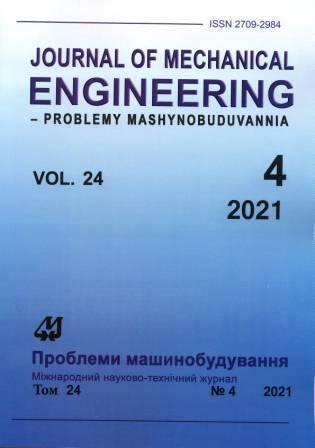Experimental and Numerical Analysis of the Shear Properties of Honeycomb Cores Produced Using Additive Technologies
Abstract
An approach to the experimental and computational study of the shear properties of honeycomb cores (HC) produced using Fused Deposition Modeling (FDM) technology is proposed. The experimental approach is based on a new sample type for testing HCs for shear. This sample contains two HCs and three steel plates. Shear tests are carried out in the TiraTest 2300 universal tensile testing machine. The HCs are made of ULTEM 9085 and PLA with FDM technology, which is implemented in the 3D Fortus 900 system. The tests resulted in obtaining the shear properties of the HCs by averaging the stress-strain curves of five samples. As follows from the analysis of the experimental results, brittle destruction of an HC is observed. Before its destruction, the value of shear deformation for samples made of PLA was 0.0134, and for samples made of ULTEM, 0.0257. The experimental analysis was accompanied by numerical finite element (FE) modeling of shear experiments, taking into account the deformation of the equipment. With the FE modeling of the experiments, to describe the behavior of the samples, it is necessary to take into account the influence, on the measurements of the shear properties, of the equipment and the deformation of each honeycomb cell. The deformation of three plates was taken into account; the elastic properties of the adhesive joint were not taken into account. A computer model of the deformation of the HCs with equipment was built using ANSYS Design Modeler. With FE modeling, only the elastic behavior of the HCs was considered.
Downloads
Published
Issue
Section
License
Copyright (c) 2021 И. И. Деревянко, Б. В. Успенский, К. В. Аврамов, А. Ф. Саленко, И. В. Библик

This work is licensed under a Creative Commons Attribution-NoDerivatives 4.0 International License.
All authors agree with the following conditions:
- The authors reserve the right to claim authorship of their work and transfer to the journal the right of first publication of the work under the license agreement (the agreement).
- Authors have a right to conclude independently additional agreement on non-exclusive spreading the work in the form in which it was published by the jpurnal (for example, to place the work in institution repository or to publish as a part of a monograph), providing a link to the first publication of the work in this journal.
- Journal policy allows authors to place the manuscript in the Internet (for example, in the institution repository or on a personal web sites) both before its submission to the editorial board and during its editorial processing, as this ensures the productive scientific discussion and impact positively on the efficiency and dynamics of citation of published work (see The Effect of Open Access).

